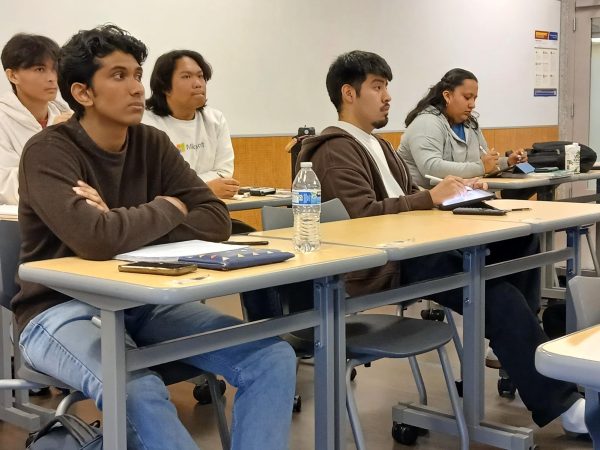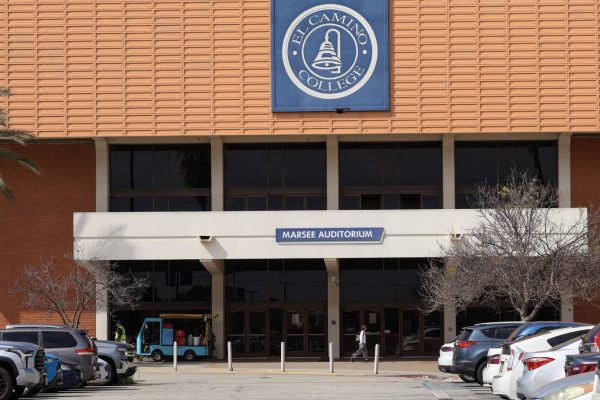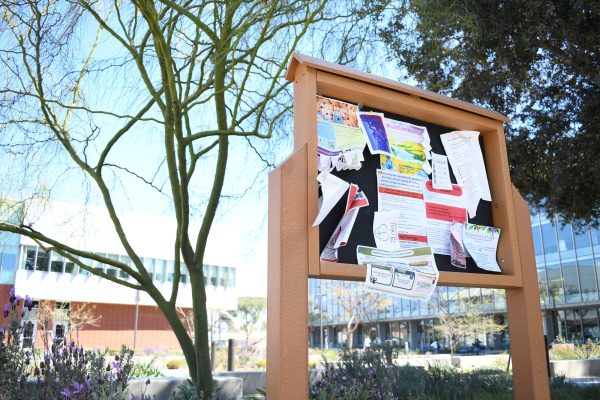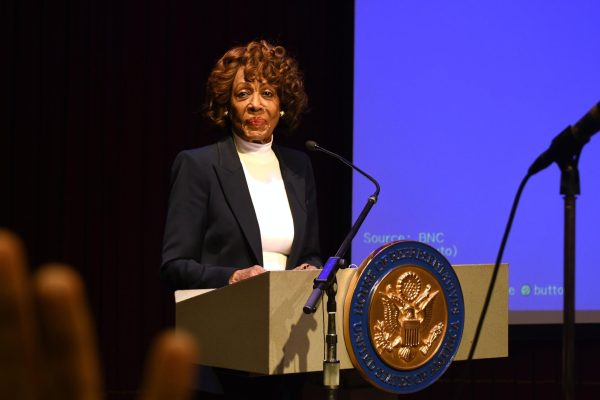Research shows that community colleges across Calif. see overall enrollment decline paired with incline in Distance Education enrollment
Prior to COVID-19, distance education was merely an option that students could utilize, but was not a leading preference for students. Amidst the school closures that began in March 2020, colleges across California have seen a rise in distance education.
Paul Feist, vice chancellor of communications and marketing for the Community Colleges Chancellor’s Office said that before March of 2020, only about 15% of classes in California were online, and during COVID-19 that percentage increased to nearly 83%.
Aside from the abrupt transition that colleges like Long Beach City College, Pierce, Pasadena, El Camino, and Cerritos dealt with, there were obstacles that came along with the rise of distance learning.
Teachers and staff were faced with challenges such as Canvas not functioning correctly, learning how to adapt to teaching online, and making sure their students were receiving the material needed to understand the class.
Students also faced difficulties such as a lack of access to reliable internet service and technology, as well as struggling mentally and financially.
Some students did not have a peaceful or quiet place to study and do their assignments and other students were dealing with the emotional stress of having to go through a pandemic alone as a student.
A COVID-19 Student Impact Survey found that 49% of students experience difficulty concentrating on online school, according to California Community College Chancellor’s Office.
Officials at CCCCO said they will be working together to ensure that for the year 2022, students can return to campus in a safe environment and continue to maintain a successful academic year.
Is HyFlex a potential dream or nightmare for higher education?
Distance education in California community colleges has accounted for nearly a quarter of total enrollment during the 2019 to 2020 academic year, but with overall enrollment down in the past two years, distance education officials are looking to new ideas to help forge the future of higher education.
California Community Colleges (CCC) like El Camino, Long Beach City, Pierce, Cerritos and Pasadena City have all seen positive benefits in distance education recently. Those colleges have also faced adversities dealing with staff training, faculty certification, student modality-compatibility and equity. There seem to be distinct pros and cons to distance education.
The California Community Colleges Chancellor’s Office (CCCCO) Data Mart showed that even though California Community Colleges and El Camino College saw nearly the same decline in overall enrollment during the 2019-2020 academic year, 6% and 7% respectively, that ECC’s distance education (DE) numbers had increased only by 13%, compared to nearly one in four CCC students being enrolled in DE.
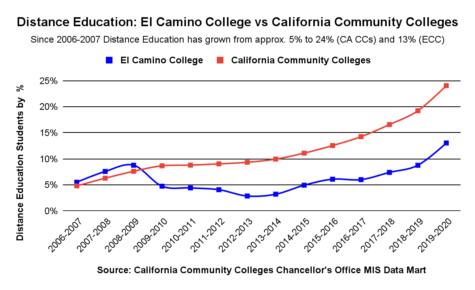
Moses Wolfenstein, ECC’s distance education coordinator, said that there has been a shift at ECC to get more faculty certified to meet the rising demand for distance education.
“I’m primarily supporting [around 250] certified faculty who are teaching online courses,” Wolfenstein said. “I’m trying to train up a dozen at a time over an eight-week span to [train], let’s just ballpark it at 1500, full and part-time faculty.”
Los Angeles Pierce college has seen a high increase in its distance education in the last three years as well. According to the Community College Chancellor’s office, Pierce college has seen an increase of 28.75% in distance learning students from 2017-2020.
As of spring 2021, Cerritos College had over 700 instructors teaching online, Linda Clowers, dean of Academic Affairs & Strategic Initiatives at Cerritos College said.
When the pandemic hit in March of 2020, faculty leaders and college administration at Cerritos worked together to coordinate technical support and professional development training to assist the faculty with the transition, Clowers said.
Linda Vann, a Disabled Student Programs and Services (DSPS) specialist for the California Community Colleges Chancellor’s Office said that before the COVID-19 pandemic, a student’s request to have a lecture recorded or meet with an educator via Zoom would often be flat out denied.
“Coming from the world of students with disabilities, the one thing that we have gained is more flexibility in how we view students’ needs,” Vann said.
Vann said she is pleased that the need for distance education during the pandemic has created a byproduct which allows students with mobility and anxiety issues, that do not do well in face-to-face learning environments, to have a model that best fits their needs.
Lisa Beach, member of the CCCCO’s Distance Education & Education Technology Advisory Committee said that she sees distance education initiatives like HyFlex, a teaching model that requires educators to teach three different teaching modalities (in-person, online and asynchronous) simultaneously, as two different sides of the same coin.
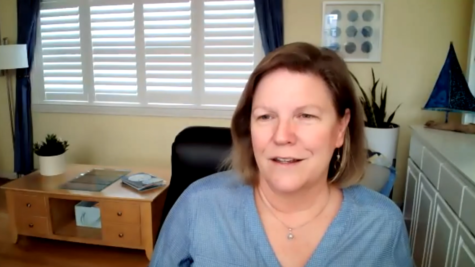
Beach feels that HyFlex is a dream scenario for students. Allowing them to have a daily ala carte style approach to their education. If they want to go to class in-person, watch a live stream of a lecture online, or just take the class asynchronously, they can with a HyFlex model.
“From a student perspective absolutely, this is the best of all worlds,” Beach said. “If I’m a student and I want to be there in-person on Mondays but have to work on Wednesdays during that time, what a great thing that I can choose to do that without having to make those arrangements in advance or talk to anybody.”
Beach warns that the other side of the HyFlex coin, which requires educators to be proficient in three different teaching modalities, may be a difficult task for teachers. This could result in students in different modalities having drastically varied educational experiences.
“Asking someone to teach in all three modalities, and get all three pedagogies right, seems like a Herculean effort.”

Wolfenstein said that one of the main reasons why Distance Education at ECC has been playing catch-up is due to the volume of uncertified professors who have to be certified for asynchronous teaching, while simultaneously dealing with the technological hurdles of being off-campus.
“It is so hard helping people along when you cannot sit with them next to the computer. It’s brutal. It’s genuinely brutal,” Wolfenstein said. “You run into problems where people are hitting an issue, and you want to help them, but first you have to help them figure out how to move the Zoom chat because we’re doing a screen share.”
Wendy Bass Keer, Distance Education Coordinator at Los Angeles Pierce College also said it was stressful for her and her team to get faculty trained for an online environment. Due to much preparation, Keer’s hours grew longer.
“Prior to the pandemic, I worked 40 to 50 hours a week. During the pandemic my hours went up to 60 to 80 hours a week,” Keer said.
Jory Hadsell, Executive Director for The California Virtual Campus – Online Education Initiative (CVC-OEI), said during the April 7 CCCCO Distance Education and Education Technology Advisory (DEETAC) meeting via Zoom that if students’ equity is a commitment to the Calif. Community Colleges Chancellor’s Office, that the committee had to be very careful not to oversell HyFlex as something convenient.
“I just think [there are] really big implications for quality and learning outcomes,” Hadsell said. “When online education started, a lot of us were so excited about the flexibility and convenience, and that’s really how online education was sold to students and faculty and institutions… and we paid a price for that.”
Hadsell said that there are aspects of DE that provide flexibility and a certain level of convenience for s students, but argues that DE can also be arduous and rigorous. He hopes decisions on the future of higher education are done based on solid data to ensure that the student experience is the priority.
“We all want to be open access, but we owe it to students to make sure that’s a high-quality experience,” Hadsell said.
Looking beyond COVID-19, Wolfenstein said that he felt hopeful and cautiously optimistic that the work being done in distance education could potentially forge the future of higher education.
“I think that distance education offers a doorway for thinking about how we can do education differently in general,” Wolfenstein said.
Long Beach City College distance education enrollment increases
Long Beach City College has had a 95% increase of students enrolled in Distance Education classes from 2017 to 2020, according to the California Community Colleges Chancellor’s Office Data Mart.
Feist said that before March 2020, only about 15% of classes in Calif. were online. During COVID-19, that percentage grew to over 83%.

In spring 2020, Long Beach City College (LBCC) distance education enrollment increased by 83%, which is the highest number of students enrolled in distance education compared to prior years.
Hussam Kashou, associate dean of Online Learning & Educational Technology for Long Beach City College said that, prior to COVID-19, online classes had been growing consistently, partly because of strategic planning, and partly due to developmental planning and collaboration with other divisions.
Despite LBCC’s preparation of faculty and staff with online education training and online certifications, and preparation of students with online resources, there were still challenges.
“Not all [of] our students have technology, they don’t have a good place to study at home, so we always had equity-mindedness even prior to COVID-19,” Kashou said.
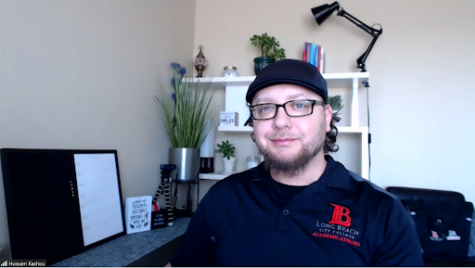
Kashou said his department started noticing that students use their cellphones a lot for their assignments.
“How can you write an essay on your phone, it’s not easy to use Canvas through your phone,” Kashou said.
There was an equity gap with technology and students having reliable internet connection and a quiet place to study. In an attempt to address this, LBCC held a Chromebook drive and gave out computers and hotspots to students.
LBCC also provided different resources, including over 97 workshops with over 2,700 participants to assist in removing barriers for students to increase their success.
Anthropology professor and Department Chair at Los Angeles Pierce College (LAPC), Erin Hayes echoed concern that students were stressed being completely online. She also mentioned some students at LAPC did not have access to a computer.
“I had a student who was falling behind in school work and it was because he didn’t have access to a computer to keep up with school work. We communicated through email and I was able to get him into an assistance program at Pierce college. He eventually was able to get a computer through the program,” Hayes said.
Norman Barsugli is a kinesiology major and Liberal Arts Campus vice president of the Associated Student Body at Long Beach City College. Barsugli said that in working directly with students, he is more aware of the challenges students were facing at the beginning of the pandemic.
“From an academic standpoint, students had worries of communicating with teachers effectively and not knowing if teachers were receiving students’ homework online,” Barsugli said.
As a student himself, Barsugli’s first time taking online classes fully remotely was due to COVID-19.
“It was a bit of a struggle at the very beginning, being accustomed to [talking] to a professor directly, [asking] them questions, and [having] classroom interactions, Barsugli said. “I am also employed full-time and going to school full-time and that’s where the struggle came through.”
Similar to Long Beach City College, students statewide were facing similar challenges.
“During the pandemic, our students have faced a lot of challenges, from losing their jobs, reduced wages, having to care for people with COVID, to a lack of access to quality internet,” Feist said.
Feist hopes that in 2022, they will gradually see more students on-campus as people get vaccinated. However, there are resources and information available for students at stayenrolled.com for more on distance learning.
Barsugli suggests students take an active approach and look at the pandemic as a unique experience to learn that they can push through and see the positive sides of it.
“Don’t discount it, it’s still your education, even though it’s online,” Barsugli said.
Pasadena City College sees distance education increase over the last four years.
Over the past four years, 2017-2020, the number of students taking distance education classes has increased by roughly 38% at Pasadena City College while students taking distance education increased in the state of California by roughly 28% according to the California Community College Chancellor’s Office Datamart.
Moreover, Pasadena City College in 2020 had 85,280 enrolled students and a little over 2,294 students who studied via distance education which was an increase of 19.18% compared to 2018.
Alexander Boekelheide, Pasadena City College’s special assistant to the superintendent and president, said students and faculty are getting used to using new technology in daily life.
“I think that students and faculty are getting better at using new tools to connect with each other. Students are increasingly finding it easier to study through distance education than in-person class,” Boekelheide said.
Boekelheide said that Pasadena City College (PCC) has been using this time in pandemic to determine the support that students need for distance education.
“[It’s] hard to predict the future, but I think this period has given us all a chance to find new ways to learn, do business, and adjust to meet those needs and higher education isn’t going to be any different.” Boekelheide said.

Richard D. Allen, coordinator of the cosmetology program in Pasadena City College said distance education has definite cons, but does allow more freedom and autonomy than an in-person class.
“I believe it is to allow students to work in their own time. There are able to work with family and take classes. Basically, it is their own time, so most of the classes don’t need to be synchronous so there is no face to face. There would be more freedom,” Allen says.
Allen is currently teaching Cosmetology by online class, and in the past has completed an online class himself. He has seen the impact of a completely online education first-hand.
“It might be affecting health,” Allen said.

Shelagh E. Rose, English Second Language faculty and Academic Senator at PCC said that due to COVID-19, most classes changed from in-person to online, which was hard for a lot of faculty.
“I think that a lot of teachers didn’t want to teach online because [they] didn’t have computer skills before. Maybe 80% of teachers used Canvas, but some of us were only using it for putting files up. They didn’t use it for grading and submitting assignments.” Rose said.
Many instructors also learned online education as students did, and took measures to ensure students could take classes, such as a mandatory eight-week online education training course.
“Before, I thought I’d never teach [my] classes online, but now if I had to do so definitely in the future [I] would be more comfortable doing [it],” Rose said.
PCC also provides technology to students who don’t have access to it.
“We took all of the computers and Chromebook, [and] we made them available to students who didn’t have a laptop,” Rose said.
This story was contributed to by: Walter Jay Jr, Estrella Ramos, Samantha Quinonez and Leslie Hudson.
Editors Note: A spelling correction was made to Jory Hardsell’s name, as well as a correction of his pronouns on June 13.
Editors Note: Hardsell’s name corrected to Hadsell on June 15.


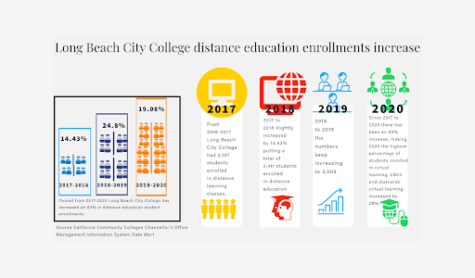
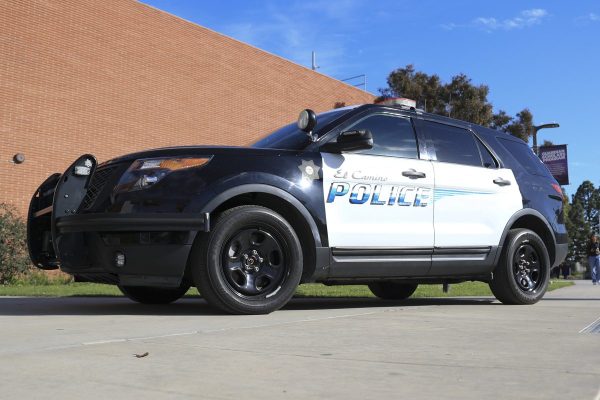
![Physical science professor Susan Stolovy presents astronomical news and updates to attendees at the first planetarium show of the semester at El Camino College on Friday, March 28. Prior to becoming a professor at ECC, Stolovy completed her doctorate in physics and worked as an astrophysicist for NASA and the California Institute of Technology on spacecraft missions. "[I'm] still very tuned into what's going on in the world of research as well, and I hope to bring a little bit of my experience into the classroom," Stolovy said.](https://eccunion.com/wp-content/uploads/2025/03/planetarium-Made-with-Clipchamp-3-frame-at-0m28s-600x338.jpg)
